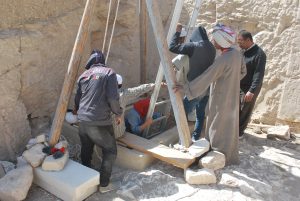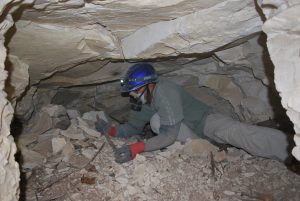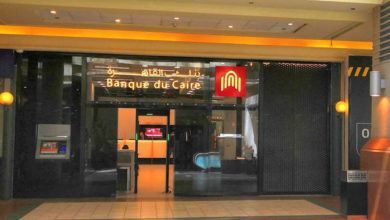Brazilians unearth unheard-of tomb in Egypt
Harboring seven bodies, the tomb sits underneath Theban Tomb 123, in the Luxor Necropolis. The crew of archaeologists at work there is the first one ever coordinated by Brazilians in the Arab country.

The first Brazilian-led archaeological mission in Egypt has finished its excavations for this year by unearthing an unheard-of tomb. During the first phase of digging at Theban Tomb 123 (TT 123), in Egypt’s Luxor Necropolis, the crew coordinated by the Federal University of Minas Gerais (UFMG) descended to the bottom of a four meter-plus deep well, where it found another tomb containing seven bodies. The crew has been doing research in Luxor since 2017.
This phase of the Amenenhet Project lasted 48 days and ended on February 25. “We focus on the external structure of TT 123. There was a well on the patio and that led to the finding of a new tomb where seven individuals had been buried. It’s a small, undecorated room, probably dating from what we call the Third Intermediate Period, towards the end of Pharaonic History. The most interesting thing about it is we probably excavated an excavation done by a late 20th century archaeologist,” José Roberto Pellini, a professor at the Department of Anthropology and Archaeology at the School of Philosophy and Human Sciences (Fafich) at UFMG, told ANBA over the phone.
The tomb is considered unheard-of because the Brazilian crew was unable to find any documentation about it. “We know that the tombs in this area haven’t been worked on. For me, this has to do with the fact that there used to be people living here,” said Pellini.

Archaeologist prepares to excavate the well that led to the discovery of the tomb
The well atop the tomb is 2×1 meters wide and 4.5 meters deep. “The individuals were in good conditions, but there was probably a collapse of some sort. It took 35 days to dig through everything. Facing the chamber were a few ceramic items that show signs of having been broken and put back together. We found 20th century materials that match the way the local population used to use this well to stock up grains and food. We found lots of ‘qrnawi’” material, the professor explained. According to him, the population that used the tombs as dwelling in past centuries used to call the Theban Necropolis ‘qrna,’ therefore they came to be known as the ‘qrnawi.’
Up to three meters deep, the crew found evidence of people having lived in the tomb – like clothes, food cans and tobacco. Underneath all that were large amounts of pharaonic materials. “It was probably dug up quickly. The bodies found were three adults and four children. We don’t know who they are yet, and probably never will, because there were no decorations or any hints. The remnants are very few. We will keep on studying the materials from this tomb to see if we can get information about what’s possibly a family,” said Pellini, adding that the collapsed limestone and sediments also damaged the mummification of the bodies.

Begining of the excavation of the new tomb, which dates from the so-called Third Intermediate Period
One of the findings of the crew’s forensic anthropologist is that some of the subjects had spinal pathologies and were probably submitted to repetitive labor. Now, the crew – which comprises archaeologists, anthropologists and documentation specialists – is back in Brazil, poring over what they collected in Egypt, like photographs, video and measurements.
The next dig will begin between December 2019 and January 2020. It will see the crew go inside TT 123, where there’s a lot of surface material. The archaeologists are aware of a statue room there, and a well where the digging will begin. There’s also a room adjoining the statue area, measuring 3.5×2.5 m, with a 2-meter high ceiling. The professor explains that although three or four mummies are already apparent here, getting to them could take two other excavation phases. This will depend on the statue room well: if what happened this year is any indication, it might harbor even more surprises and finds.
Tombs or houses

“It is very rare to have archaeologists interested in retrieving this silenced past.” Pictured, ‘qrnawi’ children pants.’
One of the subjects researched by the Brazilian-led group are the ‘qrnawi,’ who used the tombs as homes or stables. Around 2000 there was an expelling motion of this population and approximately 10,000 families were taken away from the site. “Materials from this time are usually seen as ‘garbage.’ It is very rare to have archaeologists interested in retrieving this silenced past. This is one of the most important aspects of our project. Since we were trying to retrieve and show interest in this material, it seems that this year there was an agreement and [archaeologists from other countries] started to separate them for us. And we are starting to have a better understanding of how this people used the tombs. That explains aspects of the tomb structure changes, part of this local trade, weather, economy,” highlighted Pellini.
Other important aspect is the Projeto Olhares, which took a group of anthropologists from UFMG to produce photo and video registrations of the experience. The idea is to have the perspectives from team members and from people living there, and this year cameras were available for those interested in participating. Next year, the team expects to continue expanding, starting with paintings and music performances at the tombs area.
The archaeologist revealed that two lectures are already scheduled for next year, in Cairo and Luxor, and they should occur in January. The goal is to show a little of the work done by the team led by Brazilians from the Project Amenenhet.
Translated by Gabriel Pomerancblum & Gabriel Pomerancblum




